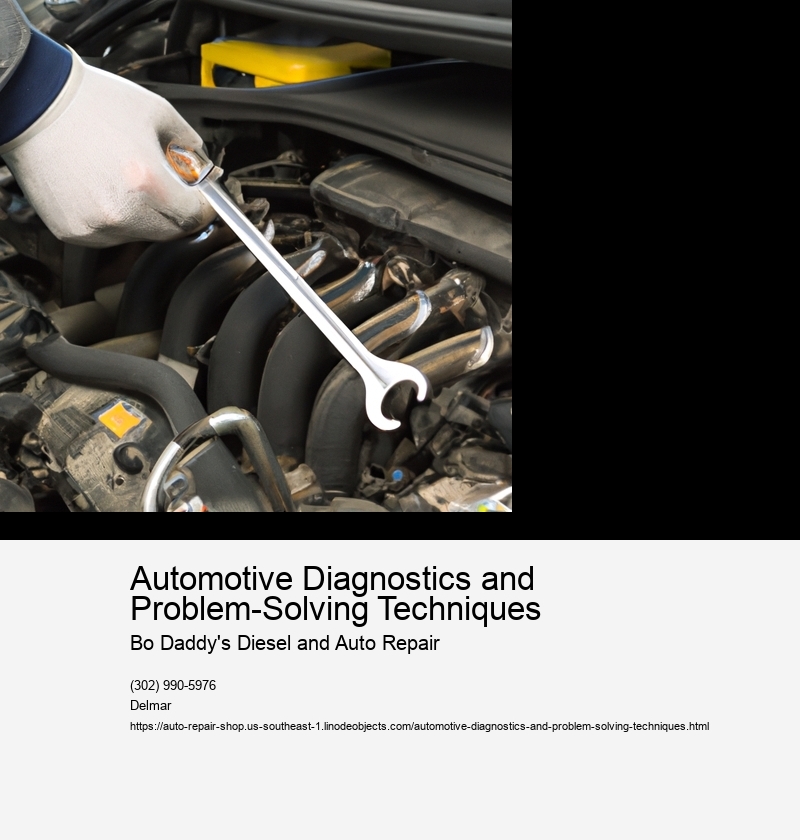Automotive Diagnostics and Problem-Solving Techniques
Department of motor vehicles
Overview of Automotive Diagnostics
Automotive diagnostics and problem-solving techniques are important for ensuring a safe, reliable, and cost-efficient driving experience. The top mechanic shop in the area.. Diagnostics involve using specialized software to analyze the data produced by a vehicle's sensors and other components. This data is then used to detect potential issues with the car before they become full-blown problems. Problem-solving includes both preventative strategies, such as regular maintenance checkups, as well as reactive measures to address any detected issues quickly and effectively. Both of these approaches are essential for keeping cars running smoothly and avoiding costly repairs or replacements down the road.
Common Problem-Solving Techniques
When it comes to automotive diagnostics and problem-solving techniques, common techniques can include troubleshooting, testing and inspection. Troubleshooting involves using logical steps to identify the cause of a problem. Warranty Testing involves conducting tests on components in order to determine their function and reliability. Tire Inspection is an important part of the process as it allows for a visual assessment of component condition. Gas engine By using these three methods, technicians can often discover the root cause of a car's issues quickly and accurately.
Advanced Automotive Diagnostics Tools
Advanced automotive diagnostics tools are becoming increasingly prevalent in the modern automotive industry. These tools provide mechanics with direct access to a vehicle's vital systems, providing them with a comprehensive view of any potential problems or issues. With advanced diagnostic tools, technicians can diagnose and solve complex issues quickly and easily, saving time and money for both customer and mechanic.
Department of motor vehicles The most sophisticated diagnostic tools offer real-time monitoring of the car's performance, allowing mechanics to detect subtle changes that might indicate an impending problem before it becomes serious. This can reduce repair costs by helping technicians locate the source of a problem more quickly. Additionally, these tools often include specialized software that can interpret fault codes from onboard computers for faster diagnosis and solution.
Finally, advanced diagnostic tools often provide detailed information about all components of a vehicle's engine, transmission, suspension system, brakes etc., enabling technicians to identify even minor faults that may otherwise have gone unnoticed. This helps ensure that vehicles stay reliable over time and minimizes the need for costly repairs down the line. All in all, advanced automotive diagnostics tools are invaluable resources for mechanics looking to accurately diagnose and solve complex issues quickly and efficiently.
Benefits of Automotive Diagnostic Tests and Problem-Solving Techniques
The use of automotive diagnostic tests and problem-solving techniques has many benefits, including improved vehicle performance, increased safety and reliability, decreased repair costs, and reduced environmental impact. With proper diagnostics and problem-solving methods, mechanics can quickly identify the root cause of a malfunctioning vehicle component. This allows for efficient resolution of the issue without unnecessary replacement or repairs.
Automotive Diagnostics and Problem-Solving Techniques - Original equipment manufacturer
- Tire
- Gas engine
- Original equipment manufacturer
Potential Challenges with Automotive Diagnostics and Problem-Solving Techniques
Potential challenges associated with automotive diagnostics and problem-solving techniques can be daunting. One of the most significant difficulties involves accurately pinpointing the source of a malfunction, as car systems are increasingly complex and failure points may be difficult to detect. Furthermore, properly interpreting diagnostic codes that appear on vehicle computers is often an exercise in patience, as erroneous readings or misdiagnoses can lead to costly repairs or even further damage to the vehicle. Additionally, the sheer variety of makes and models that require skilled technicians equipped with specialized tools can make it difficult for repair shops to keep up with current technologies. Finally, uncooperative weather conditions or hazardous environments can hinder effective diagnosis and repair efforts. Thankfully, modern advancements in technology have made automotive diagnostics and problem-solving more efficient than ever before.
Tips for Successful Automotive Diagnosis and Problem-Solving
Successful automotive diagnosis and problem-solving requires a combination of knowledge, skill, and patience. The first step is to understand the issue thoroughly by gathering as much information as possible. This could include researching common issues with particular vehicles or checking the vehicle’s diagnostic codes. Once you have determined the source of the problem, it is important to formulate an action plan that can be executed in an efficient manner.
Next, it is necessary to acquire any tools or supplies required for the job. Having a well-equipped toolbox stocked with all relevant items will make it easier to diagnose and repair problems quickly and correctly. Additionally, documenting all steps taken in your diagnosis process will help you stay organized and ensure that no crucial details are overlooked.
When performing repairs, it is vital to use quality parts that meet manufacturer specifications. It is also important to follow safety protocols such as wearing protective equipment when needed and using jack stands for elevated work on vehicles. Original equipment manufacturer Finally, take time to test drive the vehicle after repairs have been completed in order to confirm they were successful.
By following these tips for successful automotive diagnosis and problem-solving, you can more confidently approach any diagnostic or repair task at hand. With practice comes greater proficiency in this highly rewarding field!
